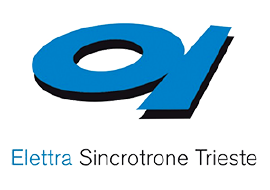THE APE-LE APPARATUS
The APE LE end station has been completely renewed with a novel mu-metal UHV chamber optimally designed for hosting a VG Scienta DA30 analyzer and a vectorial spin analysis apparatus developed by us on the VLEED principle. The D30 can operate in the deflection in the direction perpendicular to the analyzer slit therefore reducing the need of sample rotations as electronic bands over 30° angular range are collected for a given alignment. Beyond higher time efficiency in data acquisition this features make easier to control the effective experimental geometry and do not imply changes of light incidence angle on the surface greatly simplifying the exploitation of dichroic effects in ARPES and make it easier to measure on very small samples or small surface domains.
The exit plane of the D30 analyser is also fitted with two channels of variable diameter for extracting energy and momentum selected electrons and transport them to the spin analysis. The spin detection is based on very low energy electron diffraction (VLEED) from magnetic surface oxide targets. Two orthogonal VLEED scattering chambers receive the photoelectrons from the corresponding channels. These custom-designed chambers host identical detector surfaces that can be permanently magnetized in plane in two perpendicular directions forming, altogether, a 3D vectorial spin polarization detection system. Both VLEED 2D detectors are connected with a dedicated target preparation chamber where the magnetic targets are grown by e-beam deposition and controlled surface treatments, developed on our own project at IOM-CNR.
SP-ARPES at APE-LE is accessible through NFFA-Trieste proposal system.












